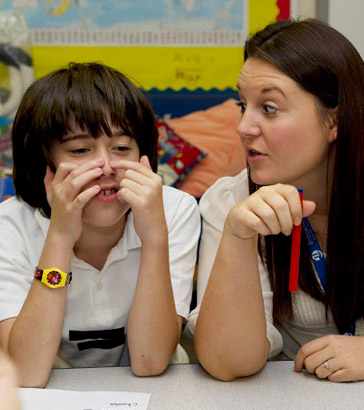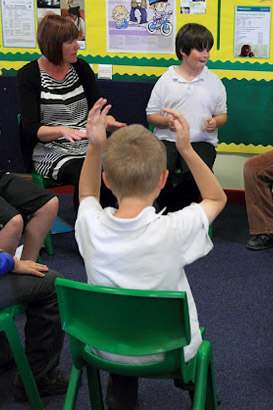In the mainstream curriculum, cognition (thinking and understanding), problem solving (acting upon understanding) and even metacognition (thinking about thinking) feature in many lessons. In good schools, much thought is put into strategies such as Bloom's taxonomy (of learning objectives) (Bloom et al, 1956) so that the pupil is steered towards meaningful learning rather than a shallow and superficial memorising of facts.
On the Norman Conquest, pupils may have learned:
- The Battle of Hastings occurred in 1066;
- William's army defeated Harold's army defending the Saxon monarchy;
- Harold was killed by an arrow through the eye;
- The battle was commemorated by the Bayeux Tapestry.

What questions should we be encouraging a class to think about to develop their historical understanding.
Click for the answer
The bare facts about the Battle of Hastings are well known, but do not convey any understanding of the significance of the events. We might ask:
- What did it mean for the English people?
- How did their lives change over time?
- What if William hadn't invaded?
- What if Harold had won?

The purpose of the set of history questions on the previous slide is to extend learning from memory to understanding to application, and then on to the higher orders of learning which are to found in the abilities to analyse, evaluate and create.
For those with SLD teachers are often restricted to memory, because:
- It may take many hundreds of opportunities to repeat a skill before it is lodged in the long term memory.
- Those with SLD tend to find generalisation extremely difficult (Lacey, 2009).
- Teachers often get enticed by the need to provide order, structure, routine and certainty for our learners.

SLD schools are usually excellent at routine, order, structure and certainty. There are whole pedagogies based upon these principles (TEACCH and ABA, for example).
Such routines are a major opportunity for learning, especially with those who are functioning at the earliest stages of intellectual development. It is tempting to maintain routine, order, structure and certainty to such a degree that learners experience considerable distress when such certainties are taken away. This is perfectly understandable – if you're not in control of your own life, there is some security in knowing that someone else is. That means that routine, order, structure and certainty become essentials, not options.

By relying on routine every day in the classroom, however, we may be restricting opportunities for learning, because we are not expecting our pupils to think and to solve problem. When faced with problems and difficulties, as inevitably they will be, pupils who have learned to rely on routine, order, structure and certainty will have no skills or strategies to fall back upon. In these circumstances it may well be that their distress will be even greater. This module proposes that teaching children with CLDD to think and problem solve as independently as they possibly can is not an option, it is a necessity.
Penny Lacey has been at the forefront of a growing campaign to bring thinking and problem solving back into the heart of the SLD curriculum. This quote from her gets right to the heart of the issue:

SLD
children's likely lack of interest in the world generally can be a challenge, but providing exciting activities can help to
provoke interest. We need to introduce children to different kinds of animals, let them experience the weather at first hand,
work with artists, make films, visit unusual places, people and things and experience a range of physical movements, from
abseiling to horse-riding to sailing to ice skating. Just erecting a tent and eating home made popcorn in it can provoke many
thinking skills. There is a big wide world to be discovered beyond the routine, although we must be careful not to provide
a catalogue of unconnected experiences. The connection is thinking and problem solving, and we need to make that very explicit
or the children may not notice.
Lacey, 2009

Bloom B S, Engelhart M D, Furst E J, Hill W H and Krathwohl D R (1956) Taxonomy of educational objectives: the classification of educational goals: Handbook 1: Cognitive Domain. New York. Longmans.
Lacey P (2009) Teaching thinking in SLD schools. The SLD Experience. 54: 19-24.